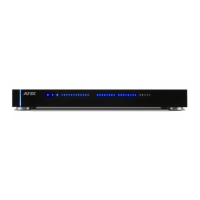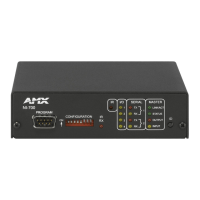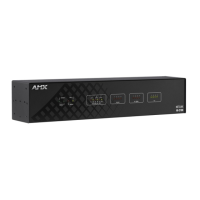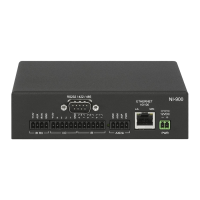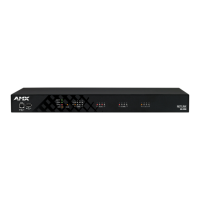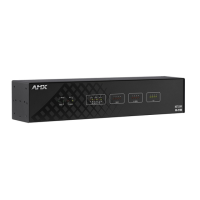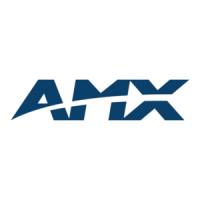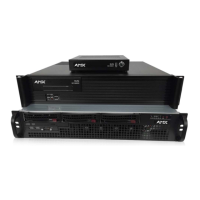NetLinx Security within the Web Server
103
NI-3101-SIG Signature Series NetLinx Integrated Controller
Configuring application-defined devices
Elements such as DUET_DEV_TYPE_DISC_DEVICE and DUET_DEV_POLLED are defined within the
NetLinx axi. The latest version of the NetLinx.axi file contains both the new API definitions, as well as
the pre-defined constants that are used as some of the API arguments
(ex:
DUET_DEV_TYPE_DISC_DEVICE). Sample code can be found within the DEFINE_START
section seen in FIG. 65:
PROGRAM_NAME='DDD'
DEFINE_DEVICE
COM1 = 5001:1:0
COM2 = 5001:2:0
dvRECEIVER1 = 41000:1:0
dvDiscDevice = 41001:1:0
DEFINE_CONSTANT
DEFINE_TYPE
DEFINE_VARIABLE
DEFINE_START
STATIC_PORT_BINDING(dvDiscDevice, COM1, DUET_DEV_TYPE_DISC_DEVICE,
'My DVD', DUET_DEV_POLLED)
DYNAMIC_POLLED_PORT(COM2)
DYNAMIC_APPLICATION_DEVICE(dvRECEIVER1, DUET_DEV_TYPE_RECEIVER,
'My Receiver')
(***********************************************************)
(* THE EVENTS GO BELOW *)
(***********************************************************)
DEFINE_EVENT
DATA_EVENT [dvRECEIVER1]
{
// Duet Virtual device data events go here
}
This code would have given the Master a previous “heads-up” notification to look for those devices
meeting the criteria outlined within the code.
What are Application Devices and their association status?
There are two types of application devices: Static Bound application devices and Dynamic application
devices.
Static Bound application devices specify both a Duet virtual device and its associated
Device SDK class type, as well as a NetLinx physical device port to which the application
device is ALWAYS associated (i.e. statically bound).
Physical device names are typically prefixed with "dv" and Virtual device names are
typically prefixed with "vdv". It is recommended that anyone working with these
modules should become familiar with this naming convention.
